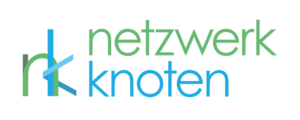For some of us home-office couldn’t deliver on its promises such as ‘higher productivity’, ‘better compatibility of work and private life’ or ‘higher engagement of employees’ on a personal level or on an organizational level such as ‘greater power of innovation’. Many of us have read and experienced a lot about the various digital tools for video calls, collaborative team and project work. A selection of them have been newly introduced into most organizations as they are essential to accommodate the switch from working in an office with your colleagues to being remote. Still, they are not able to fulfill that promise alone. Solely introducing tools (and even having trainings for them) as well as adjusting some workflows to the new setting will not be a successful solution for organizations neither short-term nor long-term. In this article I want to shed some light on the role of digital tools and the organizational development needed to ensure productive remote teams in the long-term.
A new understanding of leadership and communication is necessary for companies and employees alike in order to take full advantage of remote work and the digital tools. Leadership and communication principles rooted in micromanagement need to be reflected upon. Trust and individual responsibilities set new standards for organizations. If an organization doesn’t formulate an approach to these topic, conflicts will arise automatically — especially as soon as one part of the organization returns to the office.
Fully Remote or Only Separated
The approach an organisation should define upfront will need to include the consideration about staying fully remote or having one part of the organization work in the office and one part remote (separated). Especially separated organizations will have to tackle conflicts in the area of collaborative work, exchanging of ideas, or reviewing progress. There are multiple options available for organizations to intervene early. The first option is to address the separation task-oriented, hence fostering collaborative work in the office and leaving concentration work for home. Another option could be to address this separation employee-oriented: here, the employee themselves can choose where to do what. Without such explicit intervention, the office as well as the home-office form their own identities in the minds of the employees that will be hard to influence later. Most likely this will harm creativity, motivation and efficiency – open communication about one’s task with the team is key.
Transparent Communication & Documentation
Transparent communication within an organization whose workforce is located remotly is both hard and easy at the same time. Technologically speaking it is even easier to reach all your employees online compared to all of them being in an office. But to get the most out of communication for an organizations as a whole requires new skills that weren’t necessary in an office setting. The efficient and effective flow of information within the organization needs to be made a priority – but not from the perspective of micromanagement. A transparent and comprehendible flow of information is not needed as a control mechanism but rather to ensure that no-one is left behind. For some this might seem obvious but for others it is not — sending e‑mail updates is not the way to go here.
One of the easiest steps to transparency within a team is sharing calendars, closely followed by the chosen collaboration & documentation tool of the organization: instead of writing updates for the team or the boss, these updates, notes and so forth instantly become public knowledge within the entire organization accessible for everyone willing to read it. Deliberately switching from a pull-based communication system to a push-based communication system. Using public channels to document work progress not only within the team but within the entire organization will heavily eliminate a number of regular meetings each week. The more and the better such a system will be used the more likely are that roadblocks can be identified quickly, independent decision can be taken or across team collaboration is enabled. Besides written updates, such a tool can easily be enriched with charts and data from other systems in the organization or important messages can be recorded and shared with the organization instead of typing them.
A major driver behind transparent communication and documentation is the creation of a collective feeling of progress and motivation. This benefit is enhanced by focusing on result-oriented work — regular updates (in the morning and evening) by everyone on progress. Contrary to popular belief remote work bears a higher risk of overworking and/ or burning out than being unproductive. As mentioned above this doesn’t follow the perspective of micromanagement but serves the purpose of team coordination the individual/ team progress.
Room for Organizational Culture
As the dynamics change by having everyone or parts of the organization work remotely, the organizational culture will also need to adapt to the new situation. Those so-called water-cooler talks won’t happen in the same way, new ‘traditions’ need to form. The organization shouldn’t force employees into new interpersonal relationship rituals that make working remotely worthwhile for the colleagues. Instead, the organization should offer options like remote lunch/ dinner or non-related video calls “beer o’clock” and other experiences to spark the creativity among employees for adapting the culture themselves.
To improve connectedness and team spirit among employees and celebrate even the smallest of wins — give space to praise and appreciation for successful projects or even smaller things such as the help one received from a colleague last week when the video-calling tool had some hiccups. Besides giving feedback, organizations should focus on seeking out feedback themselves as part of their culture — show humility and reflective abilities as mistakes happen. Focus on preventing them in the future and not blaming.
A cultural adaption is a long road, it is necessary to focus on many small pieces instead of some large ones — it needs clear mantra-like communication. Don’t forget: It was the employees shaping the culture of yesterday. It will be them – including yourself of course! – shaping the culture of today and tomorrow. A new organizational culture will develop in time but it will need some space, not just physically for separated teams, but especially in the calendars and minds of all employees.
If you need a helping partner in crime while changing your organizational operating system — we are here to help you.

